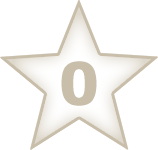Warhammer Age Of Sigmar: Warcry
Review: Great concept, but it falls a bit short
June 2, 2020 by lovecraft2020
Related Review Types
Supported by (Turn Off)
Supported by (Turn Off)
This is a review of the rules and not of the miniatures and terrain pieces. Also note that I am a casual player of Warcry and not a competitive player.
Warcry is a very fast paced skirmish game where each player fields about 5-10 models. The board itself is small and each game comes with special Deployment rules. Models are often deployed close to the center of the board, and not only at the table edges. Some models are well within charging distance in the first round. Also, battle ends after only 3 to 4 rounds, so you have to engage quickly.
This is very different from other skirmish games like Mordheim where players may take a few turns manoeuvring on the board and making ranged attacks. Warcry is all about melee: some models deploy close to your opponent and enter melee in the first round. This may sound simplistic, but the ruleset works well and special abilities (see below comments about “doubles”, “triples”, “quads”) make for interesting games.
Each game lasts 45-60 minutes, maybe even shorter for more experienced players. Since certain Scenarios last for only 3 rounds, Warcry remains a very quick game.
Pro
- Quick and simple to learn how to play.
- Brilliant “double”, “triple” and « quad » concept:
At the beginning of each turn, you roll 6 dice to determine who gets the initiative: the player with the most Singles dice gets the initiative.
For example, you roll 1, 2, 2, 3, 3, 6. This gives you 2 singles (1 and 6) and two Doubles (2,2 and 3,3).
It gets more interesting when you roll double, triple or quadruple: each model has one or more special abilities that require a Double, Triple or Quad to activate. This means that every turn you get a slightly different set of abilities that you can activate. It is a very dynamic and interesting rule mechanic.
Con
- Some warbands are less balanced/less fun to play. The warbands in the starter set (untamed beasts and iron golems) are fairly balanced and interesting to play. I bought additional cards to play with Orruks and Undead faction. Most orruks and skeletons are very slow with a Movement of 3. This makes for less interesting games and fewer strategic options.
- Totally random scenarios: for each game, you draw a random Terrain, Deployment, Victory and Twist (special events) cards. In theory, it would mean that every game is unique. Unfortunately, you may roll combinations of cards that make for boring and/or unbalanced and/or weird games.
Two examples where the combinations don't function properly
1: You draw a random event (Twist card) that decreases the Movement of every model. If you are playing Orruks/skeletons as mentioned before, they are already slow, and now they become almost immobilised.
2: We drew a combination of Deployment and Victory cards where one player has to occupy certain sections of the board. However, the Deployment card stated that some members of the occupying warband would be deployed at the beginning of Round 3. The game only lasted 3 Rounds according to the Victory card, so new models would deploy on the board at the beginning of Round 3, and the other player would only have one Round to wipe all these models or lose the game. That was an unbalanced combination of cards. Both my opponent and I believed the scenario could hardly be won by the defending faction. We both predicted a sound defeat for the defending faction and this is exactly what happened.
- Annoying runes everywhere (instead of actual words): this may sound trivial, but it is actually very annoying and slows down the game. Instead of using actual words or abbreviations (like M for Movement), Games Workshop has decided to use a rune system to represent all the statistics and the special abilities of models. To remain thematic, they have decided to use the skull logo everywhere. For basic model type (which tie in to special abilities), half the runes are some sort of skull: a skull with eight thin spikes, a skull with eight broad spikes, and so on.
For casual players like myself, they can be confusing and they slow down the game as you are trying to figure out which model can use which ability.
- They are almost no ranged combat options: this is okay for fighting as special abilities make melee combat interesting. The main issue is that you don’t use terrain much: you do not need to run for cover, you don’t want to climb buildings to get higher ground and better line of sight, and so on. I have a whole set of multi-level terrains made for Mordheim, but they are not very useful for Warcry. Almost all the fighting happens on the ground floor.
Overall, it is a good game, but it falls short on too many aspects to call it a great game.
































![How To Paint Moonstone’s Nanny | Goblin King Games [7 Days Early Access]](https://images.beastsofwar.com/2024/12/3CU-Gobin-King-Games-Moonstone-Shades-Nanny-coverimage-225-127.jpg)











I think a lot of Warcry’s balance issues comes from GW ramming all the AOS factions into it. I feel if it was played with just factions designed for Warcry the game would be more balanced. I might be wrong but I feel that GW shot the game in the foot by pandering to the AOS crowd.